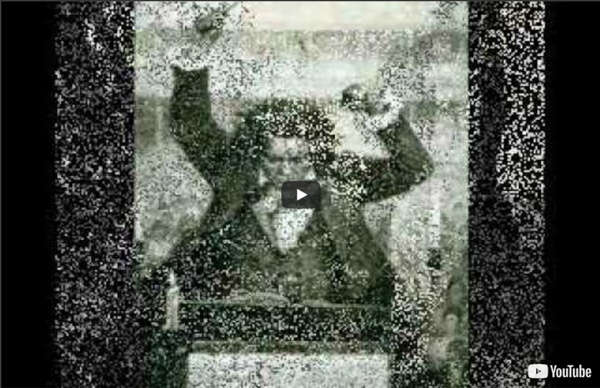



Sonata (Music) definition of Sonata (Music) in the Free Online Encyclopedia. sonata(sənä`tə), in music, type of instrumental composition that arose in Italy in the 17th cent. At first the term merely distinguished an instrumental piece from a piece with voice, which was called a cantata. Thus many early concertos, suites, and sets of variations were called sonatas. As the various instrumental forms acquired differentiated characteristics during the baroque period, the term began to identify two specific types: the sonata de chiesa, or church sonata, and the sonata da camera, or chamber sonata. In the late 17th cent. these two types merged into the outstanding baroque chamber music form, the trio sonata. The Italian operatic overture, called sinfonia, was standardized by Alessandro Scarlatti at the end of the 17th cent...... The classical sonata's movements are usually fast-slow-fast, and a minuet or scherzo is often inserted before the last movement. sonata form. See critical studies of the composers mentioned; W. sonata Warning! Sonata Popova, T.
ECB's Draghi sees second half euro zone recovery Sonata Sonata (/səˈnɑːtə/; Italian: [soˈnaːta], pl. sonate; from Latin and Italian: sonare, "to sound"), in music, literally means a piece played as opposed to a cantata (Latin and Italian cantare, "to sing"), a piece sung. The term, being vague, evolved through the history of music, designating a variety of forms until the Classical era, when it took on increasing importance, and by the early 19th century came to represent a principle of composing large scale works. It was applied to most instrumental genres and regarded—alongside the fugue—as one of two fundamental methods of organizing, interpreting and analyzing concert music. Though the musical style of sonatas has changed since the Classical era, most 20th- and 21st-century sonatas still maintain the same structure. Usage of sonata[edit] The term sonatina, literally "small sonata", is often used for a short or technically easy sonata. Instrumentation[edit] Brief history of the usage of sonata[edit] The Baroque sonata[edit]
BFMTV : Toute l'information en direct et en replay Learn French | Practice French | Learn Spanish | Practice Spanish News in Slow French | Learning French online In our course we emphasize all aspects of language learning from listening comprehension, rapid vocabulary expansion, exposure to French grammar and common idiomatic expressions, to pronunciation practice and interactive grammar exercises. In our program we discuss the Weekly News, French grammar, and French expressions, and much more at a slow pace so that you can understand almost every word and sentence. Our French podcast and French lessons published on our website contain hundreds of learning lessons from beginning to intermediate French, so listen and most importantly read our interactive transcripts on our website and you will be surprised to discover that you know more French than you think! With this tool you do not actually need to have an extensive vocabulary to start listening and reading our material. Your vocabulary will expand rapidly and naturally and your comprehension skills will also improve dramatically. Improve your French quickly! Are you a French teacher?
Galleria degli Uffizi Eventi Botticelli, Pollaiolo e il Trittico Portinari trasferiti e visibili in altre sale della Galleria dal 14-7-2015 Avvisi Chiusura sale 9 e 10-14. Dal 14 luglio, la Sala dei Pollaiolo e quella di Botticelli della Galleria degli Uffizi, contrassegnate dai numeri 9 e 10-14, non saranno più accessibili ai visitatori. • Adorazione dei Magi• Calunnia• Madonna col bambino e santi• Madonna del Magnificat• Madonna del melograno• Pallade e il centauro• Nascita di Venere• Primavera• Ritratto di uomo con la medaglia• Storie di Giuditta Nella stessa sala sarà in esposizione anche il grande Trittico Portinari di Hugo van der Goes che, nell’ambito del riordino museografico della Galleria, in quest’ambiente medesimo sarà prossimamente il fulcro di un’esposizione tutta votata alla pittura straniera nordica del Quattrocento. I dipinti più celebri di Sandro Botticelli trasferite nella sala 41 del terzo corridoio insieme al Trittico Portinari. Per vedere il video sullo spostamento delle opere collegati:
Museo nazionale del Bargello Da Wikipedia, l'enciclopedia libera. Coordinate : 43°46′13.34″N 11°15′30.06″E / 43.7703722°N 11.25835°E / 43.7703722; 11.25835 ( Mappa ) Il Museo nazionale del Bargello è un importante museo italiano, sito in via del Proconsolo 4 a Firenze , che conserva un importante raccolta di sculture e arti applicate , quest'ultime divise principalmente per tipologia. Il nome deriva dal palazzo del Bargello , detto anche palazzo del Popolo. Storia [ modifica ] Con la costituzione di Firenze a libero comune e la creazione della figura del capitano del popolo, venne costruito il palazzo più tardi detto del Bargello. Ampliato successivamente con un nuovo edificio su via dell'Acqua tra il 1260 - 80 nel 1295 venne realizzato il cortile porticato, tra il 1316 e il 1320 venne rialzato sui lati di via Ghibellina e via dell'Acqua. Epigrafe contenente la data 1255 Duramente colpito dall'alluvione del 1966 , ha subito una serie di rammodernamenti e spostamenti. La torre Volognana [ modifica ] Il Bargello P.